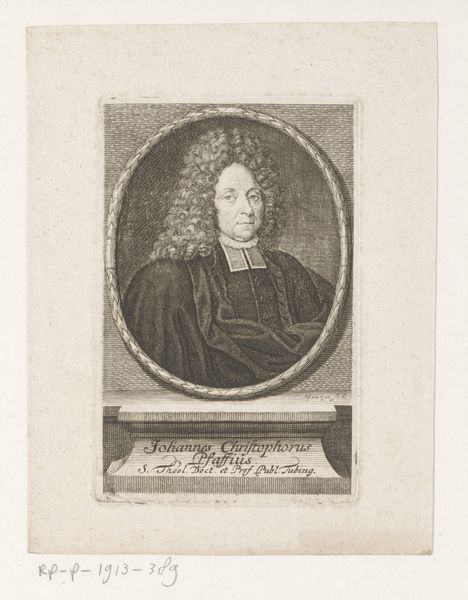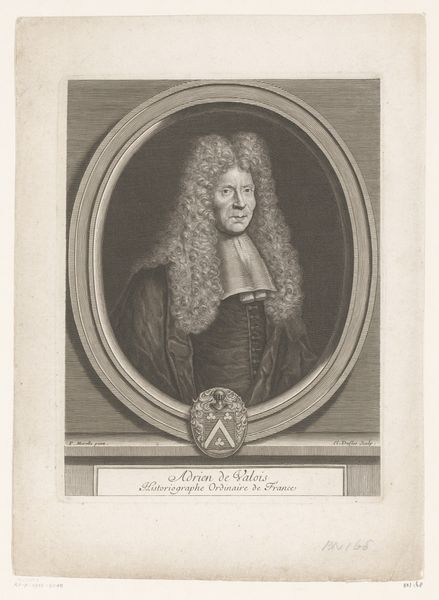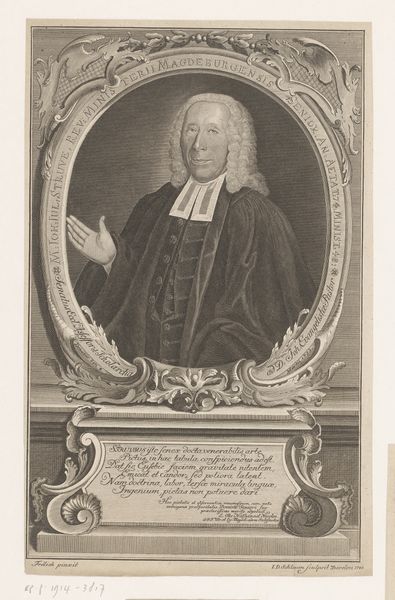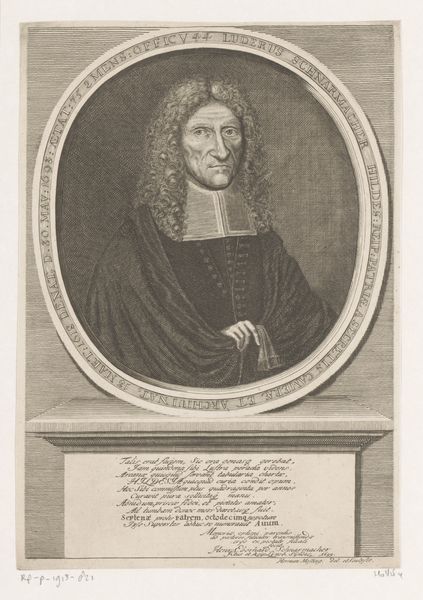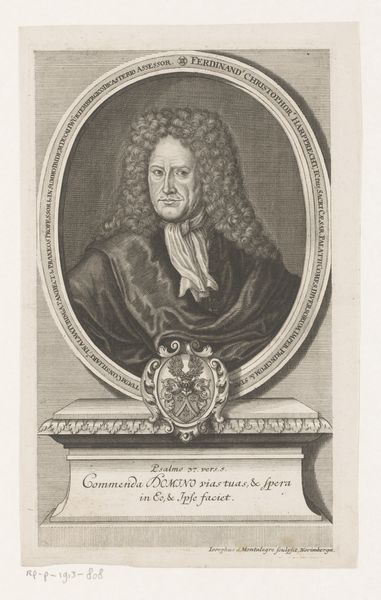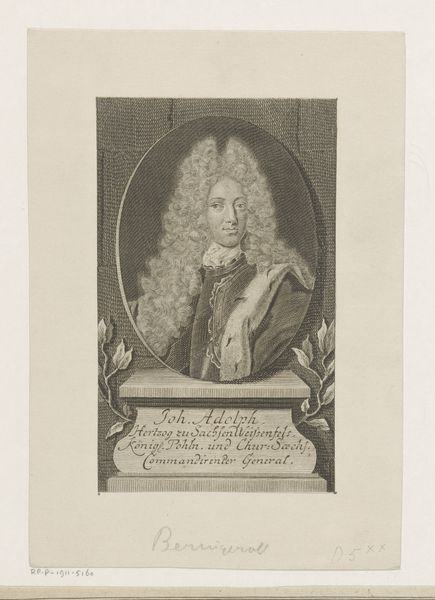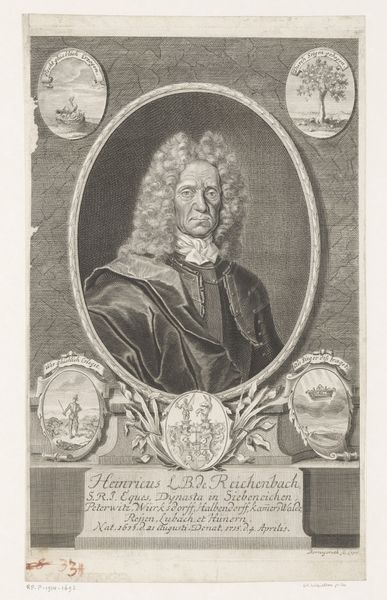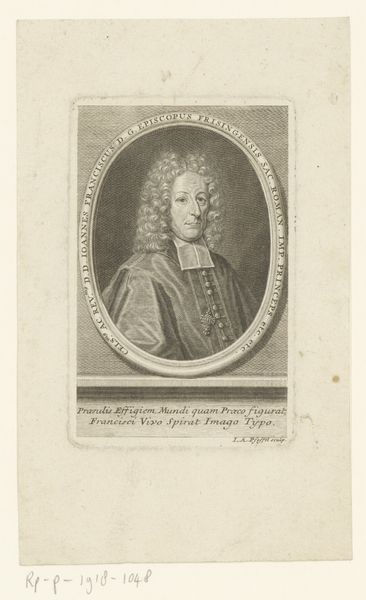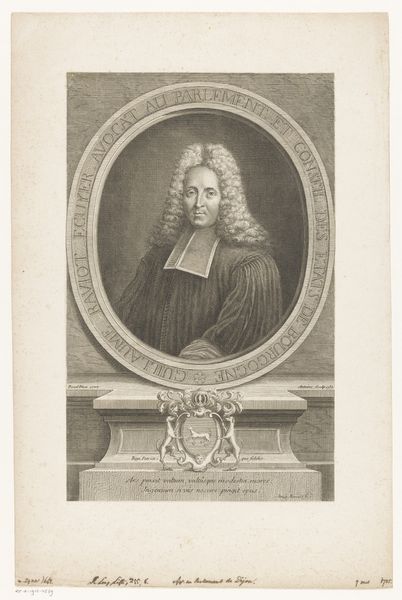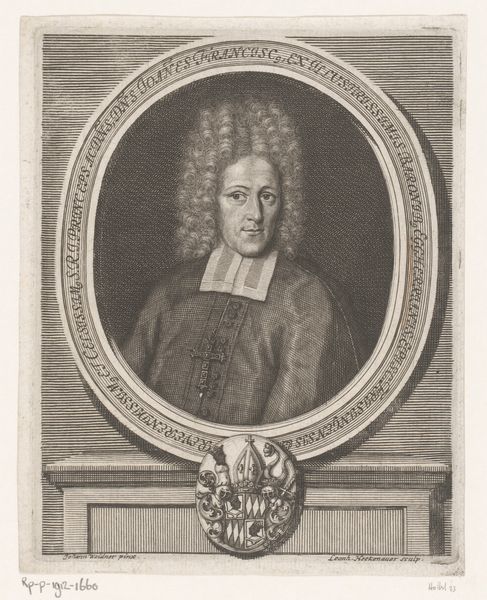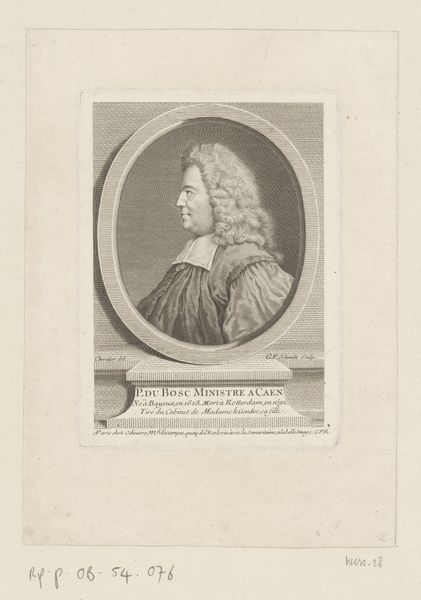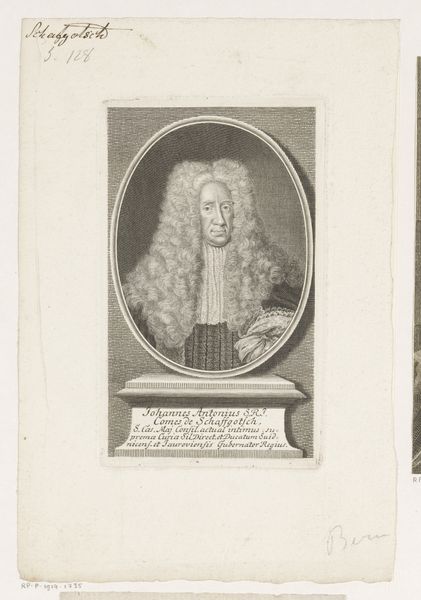
print, engraving
#
portrait
#
baroque
# print
#
engraving
Dimensions: height 226 mm, width 167 mm, height 352 mm, width 267 mm
Copyright: Rijks Museum: Open Domain
Editor: This is Jan Wandelaar's "Portret van de arts en botanicus Frederick Ruysch," made after 1723. It's an engraving, so a print. What strikes me is how ornate the framing is, compared to the very direct gaze of Ruysch himself. What can you tell me about this piece? Curator: It's important to recognize the Baroque period's complex relationship with science and portraiture. This print reflects the growing status of scientists like Ruysch, but within very particular frameworks. Who was likely consuming these images, and what messages were they meant to convey about the sitter's status? Editor: Well, based on the Latin inscription and formal attire, I would assume wealthy, educated people were the target audience. Perhaps colleagues, patrons, or even students? It feels like a celebration of academic achievement and social standing. Curator: Precisely. Consider the institution – the academy – that’s being celebrated. These images served to solidify and circulate particular ideas about intellectual authority and reinforce social hierarchies. What do you observe about the text surrounding the image? Editor: The text looks like an epitaph of some sort. But even the framing—the architectural elements—they add this air of permanence, of enshrining him somehow. Almost making the scientific work somehow sacred. Curator: And that's no accident. Wandelaar and Ruysch would have collaborated closely, aware of constructing not just an image but a legacy. Do you see parallels with how institutions construct images today? Editor: Definitely! Think about university marketing, the way they present professors, the careful staging of success…It's all about shaping a narrative, just like this print was doing in its time. Thanks, this gave me much to think about. Curator: My pleasure.
Comments
No comments
Be the first to comment and join the conversation on the ultimate creative platform.
